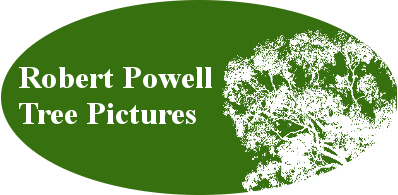Yellow box (Eucalyptus melliodora) is a eucalypt of medium size with dull (non-glossy) leaves, and bark that is rough at the base and smooth higher up. These features, however, vary greatly, even within the one site. The foliage can be a pale grey-green or more strongly coloured, sometimes mid green but oftener bluish- or brownish-green. The colour of the bark varies too: whereas the smooth bark is consistently whitish or yellowish, the rough bark can be grey, yellow, brown or reddish, often quite pale, but can also be dark. And the amount of the rough bark can differ greatly too.
The species has a wide geographical range, growing on plains and tablelands over a large area that stretches from Victoria north to south-eastern Queensland. Over this range variations in rainfall, soil etc. result in further variation, particularly in the trees’ height and shape. These things are also influenced by today’s land use. Much of yellow box’s occurrence is within the eastern Australian wheat belt. Since moreover yellow box favours good agricultural soils, many of the places where it is found are heavily cleared: the remaining trees therefore occur mostly as isolated individuals, with plenty of room to spread.
Most of the photos were taken in the Mudgee district, New South Wales — where yellow box is one of more than 50 species of naturally occurring eucalypt. In this region with an average annual rainfall about 700 mm, yellow box generally attains heights from 8 to 20 metres. It tends to divide low into branches that spread wide, and is often broader than tall.
Another feature of yellow box — at least in the Mudgee district — is its amount of foliage. Different species of eucalypt vary in the amount they carry, but many of course are quite lightly foliaged; some are very open in habit, with their leaves confined to tight clumps at the ends of the branches. But yellow box, like river red gum, has quite an abundance of foliage, well distributed through the tree’s crown, often hiding much of the branches.
My visit to the Mudgee district (in July 2018) came towards the end of a long dry spell, as can be seen from the dry paddocks.
How to view the pictures
Click on a picture in the gallery below to display it. To see its caption, click on the ‘i’ button, at the bottom (and click again to hide it). Move the cursor to the right- or left-hand side of the screen to bring up arrows for moving on or back.
© Text and photographs: Robert Powell

